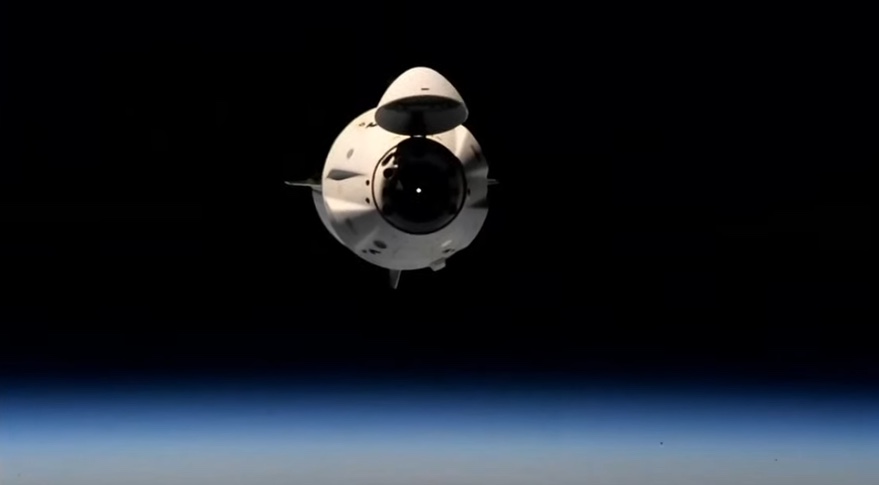
Updated 5:30 p.m. Eastern with NASA comment on contract value.
WASHINGTON — NASA ordered three more commercial crew missions to the International Space Station from SpaceX Feb. 28 at a price of more than three-quarters of a billion dollars.
NASA formally announced a modification of its existing Commercial Crew Transportation Capability, or CCtCap, contract with SpaceX. The modification adds three missions to the original six operational, or post-certification, missions to the International Space Station covered by the original contract awarded in 2014.
The NASA announcement did not disclose the value of the contract modification, only that the total value of the contract was now $3.49 billion. According to a federal contract database, NASA issued a $776 million modification for the contract Feb. 28 for the three flights. NASA spokesman Josh Finch confirmed that figure March 3, noting the figure “includes ground, launch, in-orbit, return and recovery operations, and cargo transportation for each mission, as well as a lifeboat capability while docked to the International Space Station.”
Assuming all three additional flights carry four astronauts each, as have previous post-certification missions, the contact modification works out to a per-seat cost of $64.7 million. While NASA has not published per-seat prices in the past for commercial crew missions, NASA’s Office of Inspector General (OIG) estimated a cost of $55 million per seat for SpaceX’s original CCtCap contract in a November 2019 report. That increase of 17.6% is line with inflation between 2014 and 2022.
That price is significantly less than alternatives. NASA paid as much as $86 million for Soyuz seats in past contracts directly with Roscosmos. The same OIG report estimated a per-seat cost on Boeing’s CST-100 Starliner of $90 million under that company’s CCtCap contract.
Delays in the development of Starliner prompted NASA to award the additional SpaceX commercial crew missions. The fourth of the six original SpaceX post-certification missions, Crew-4, is scheduled to launch April 15, followed by Crew-5 in the fall. Depending on the status of Starliner, Crew-6, the last of the originally contracted missions, could then fly in the spring of 2023.
NASA announced Dec. 3 its intent to modify the SpaceX CCtCap contract to procure up to three additional missions. “Due to technical issues and the resulting delays experienced by Boeing, it is expected that SpaceX will launch its last [post-certification mission] in March 2023,” the agency stated in a procurement notice then.
Neither NASA nor Boeing have provided a recent update on progress on Starliner. In January, NASA said that Boeing was working toward a May launch of the vehicle on a second uncrewed test flight, OFT-2, a schedule it said depended on the readiness of the vehicle itself as well as launch schedules and activities at the ISS.
Related
ncG1vNJzZmiroJawprrEsKpnm5%2BifK%2Bt0ppkmq%2BRp7G0edKpmJydqGLBqb7EnmSanJSewaq7zZqjZpuforqmvsKimKVlk6eyuHnMoqqsoZ%2BjwHA%3D